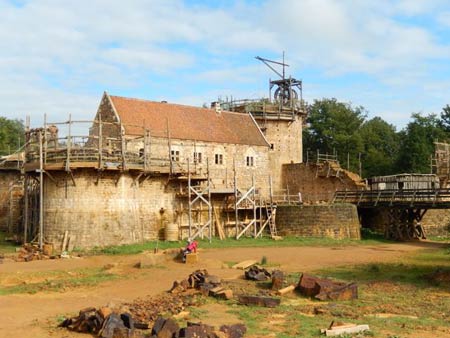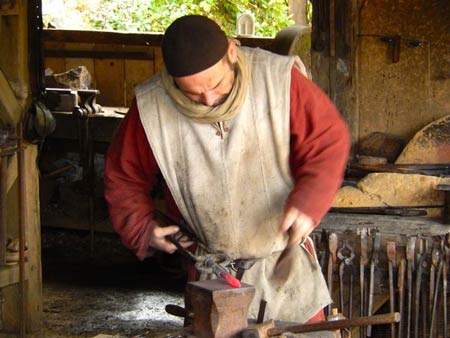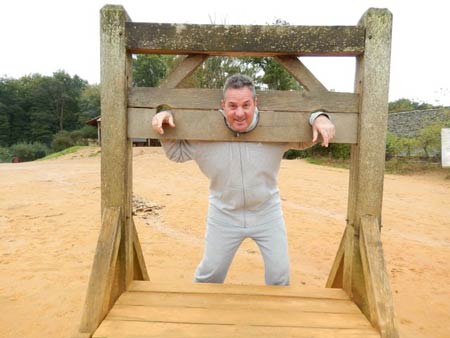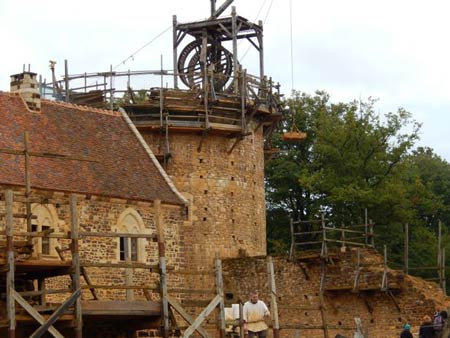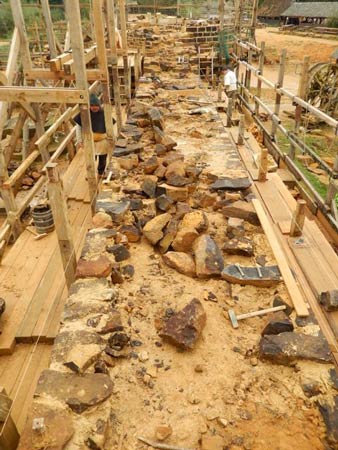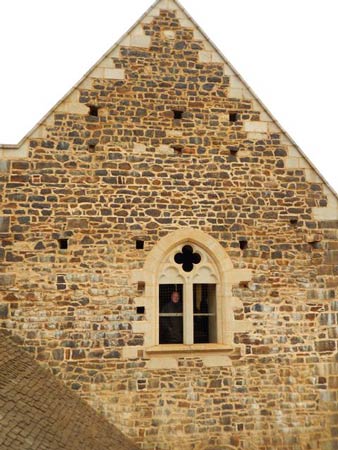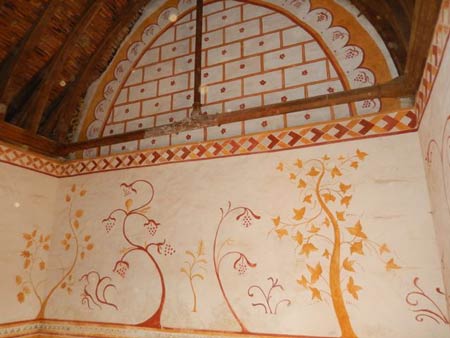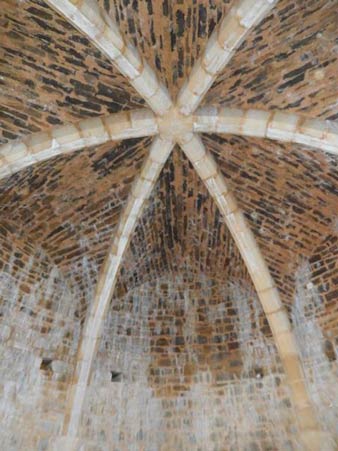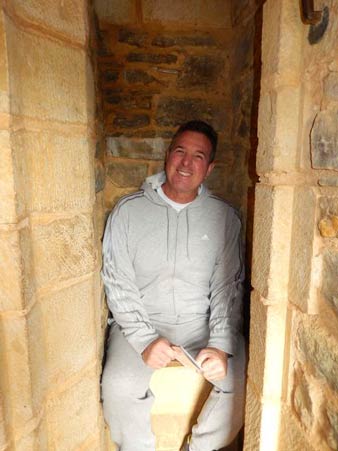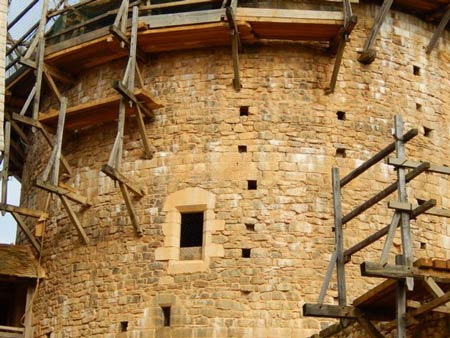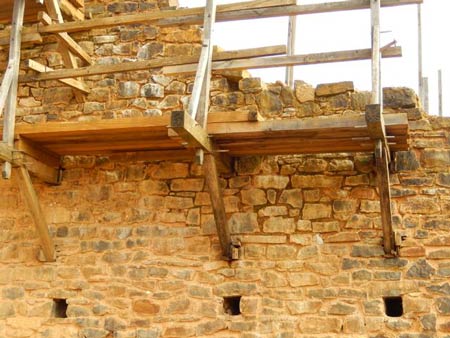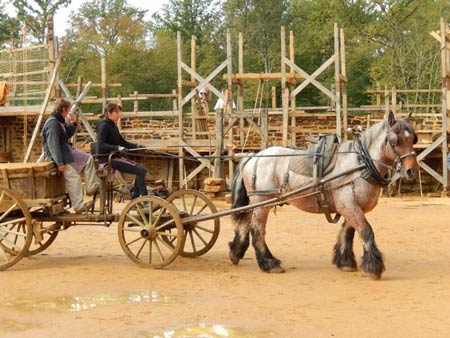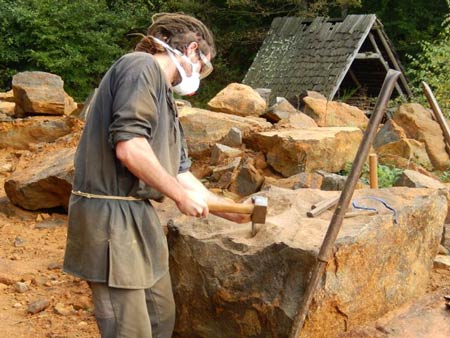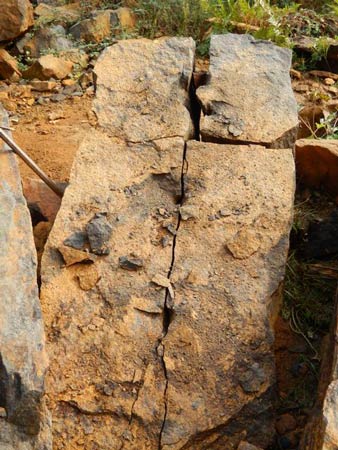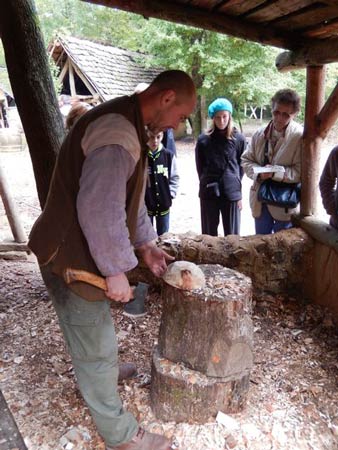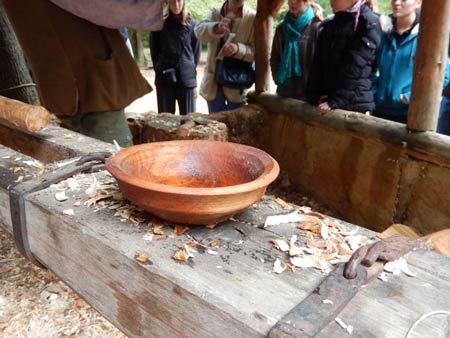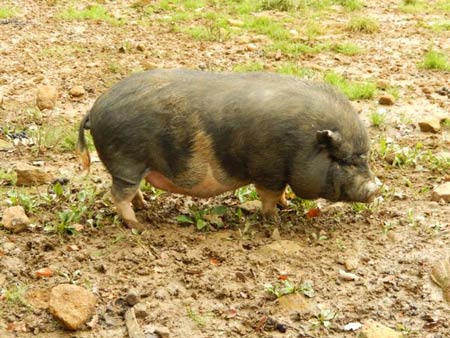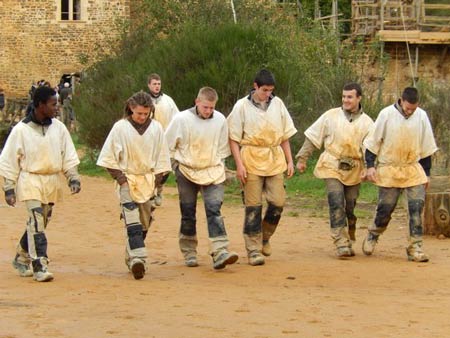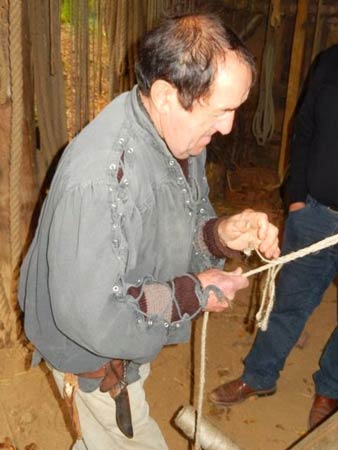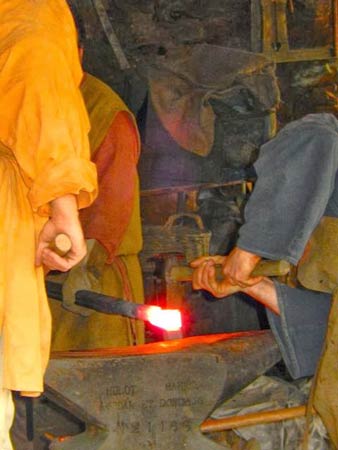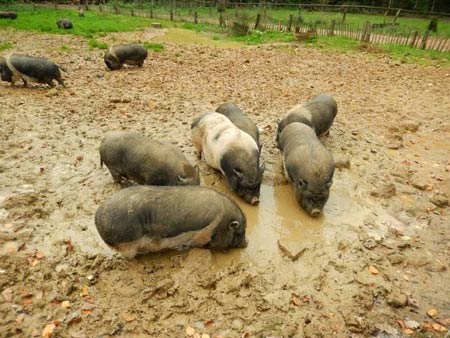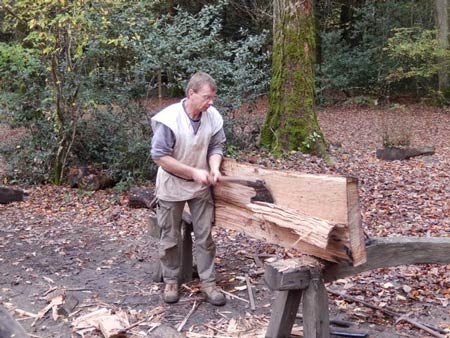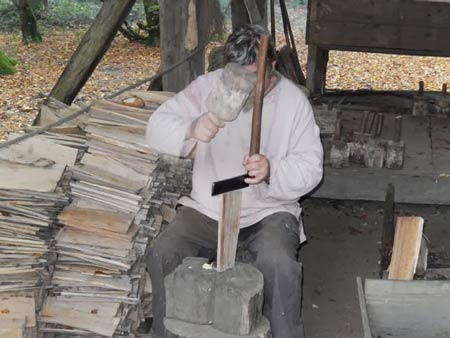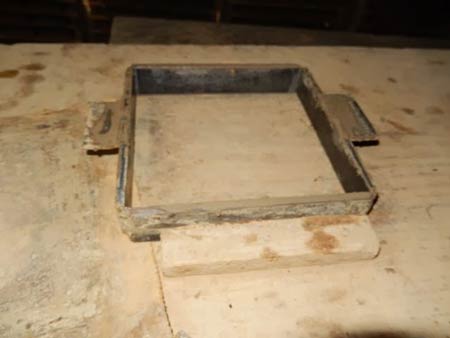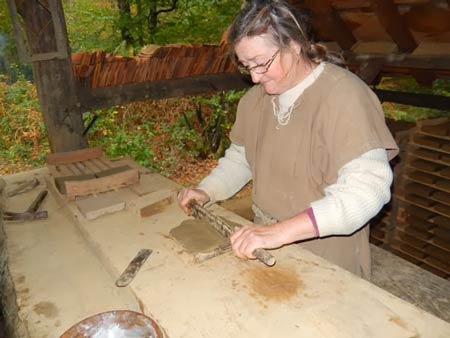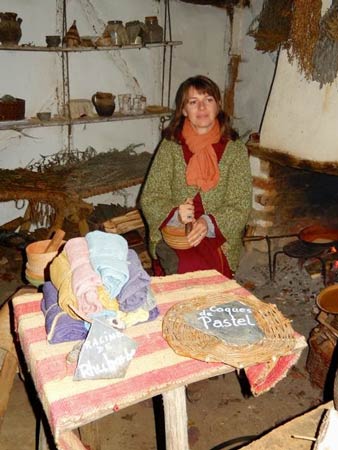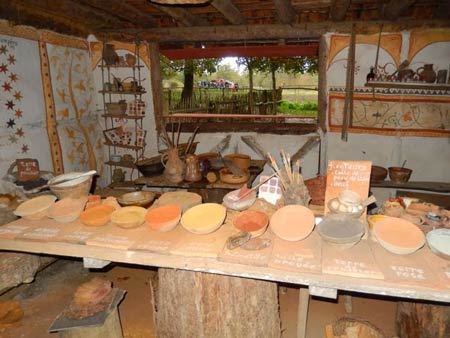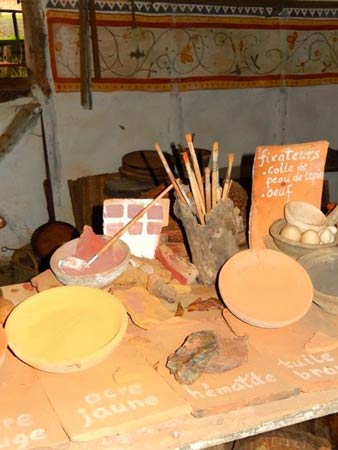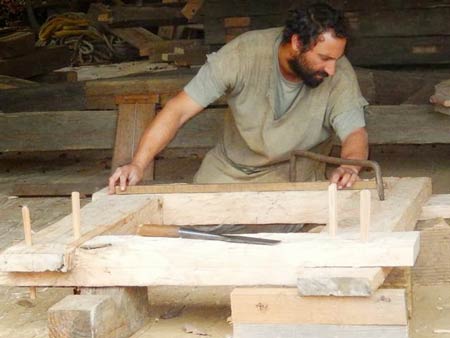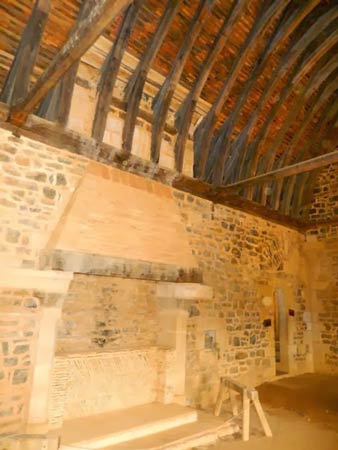Greathall Productions, Inc. presents...

Introduction
Jim's Studio
Photos from Our Travels to Literary and Historical Sites
that Relate to Greathall Recordings in:
The United States: VirginiaKentucky
California
Oregon
IrelandItaly
Germany
Jordan
Singapore
New ZealandEngland
Spain
Japan
France
How to Build a Castle (France, 2013)
Photos from Here & There
How To Build A Castle (France, 2013)
Have any of you ever wondered what it took to build a castle? Our dear friends, Tom and Lisa had the opportunity to visit the various chateaux (another name for castles) around France. They marveled at the design, engineering, and hard work it took to build them. But we had no idea how it was all done...until now!
Thank you to Tom and Lisa for sharing these wonderful photos and the amazing story that goes with them.
What happens when you already own a castle but still have time, money and energy to spare? Michel Guyot came up with the idea of building a castle using medieval building techniques, following an archaeological study at Saint Fargeau castle (which he owns). He partnered with Maryline Martin who worked on finding a site, securing financial baking, obtaining planning permission and recruiting staff. The site they found had all the resources needed for the construction: stone, wood, sand, clay and water.
In 1997 planning permission was obtained and the building site opened to the public in 1998. The style of the chateau is 13th century with every effort made to kekep the construction as authentic to the times as possible. The goal is to give visitors a better appreciation and understanding of medieval construction, and for the builders to learn about medieval techniques while they work. This project has a good 10 years before it is completed so you still have time to visit. If you are coming to France I would visit this site sooner rather than later. We found it fascinating. If you happen to be traveling with children or grandchildren they will love it! There are 13 workstations to help visitors learn about castle construction, from medieval rope making to blacksmithing.
You can see the progress they have made since starting the project. Originally this was an abandoned quarry.
The blacksmiths fashion and temper the workers tools and all manner of metal objects needed for the castle. In the Middle Ages the cost of extracting, transporting and transforming iron made it a precious commodity. The blacksmith wasted nothing!
This was the punishment for misbehavior.
How was the stone and other material lifted to the top of the buildings? Here you see a hamster wheel which could be considered a medieval crane. A single worker can lift a 300-400 kg load several meters. That's almost 900 pounds.
The stone walls are very thick! They use blocks of sandstone from the quarry and also work in limestone for the more intricate stones for the windows, doors, vaults, ribs, etc. Mortar made by mixing slaked-lime, sand and water is used to bind the stones. Perpendicular plumb-rule and vertical plumb-lines are used to check that the walls are horizontally and vertically straight.
One finished exterior.
All natural material is used for the inside decor.
Roof structure.
Tom decided to initiate the privy.
As we traveled around France I kept wondering what the holes were on the exteriors of buildings. For scaffolding!
Here is a close up. I found this fascinating!
Cart and horse transport materials on site. These horses are trained to maneuver with great precision. They also haul timber from the forest.
Stonecutters chisel out rows of holes in the stone. Iron wedges are placed in these holes. The quarrymen strike the wedges with sledgehammers and the shockwaves split open the stone.
A demonstration on making wooden bowls
You need to be able to put your food into something.
Lunch!
The workers get a lunch break. They are all dressed in period clothing.
Making/ weaving rope
Forging tools
Lunch anyone?
Creating lumber from the local forest. Remember that all the tools are made on site, including that ax.
Wooden shakes for the roof
The mold for making clay tiles
The clay is rolled into the mold. Once it is dry it will be fired in an oven.
All the dyes, stains and paints are created by grinding and mixing natural ingredients.
Here you see the selection of colors that are created from local materials. You can view the paint on the walls.
A close up of materials used.
It looks like a window frame is being constructed here. No nails, just wooden dowels.
The main living room with timbered roof, and stone walls
Needless to say we loved our day at Guedelon and recommend it highly. I tried to limit the number of photo's but it was hard. There was so much to see and learn!
Introduction
Jim's Studio
Photos from Our Travels to Literary and Historical Sites
that Relate to Greathall Recordings in:
The United States: VirginiaKentucky
California
Oregon
IrelandItaly
Germany
Jordan
Singapore
New ZealandEngland
Spain
Japan
France
How to Build a Castle (France, 2013)
Photos from Here & There
![]()
About Jim Weiss | Storytelling Recordings
A Letter from Jim & Randy | Jim's Photo Album
Timeline of Recordings | Travel Calendar | Book a Live Performance
| Jim Writes...
Jim Weiss
Post Office Box 5061
Charlottesville, Virginia 22905-5061
(800) 477-6234 (434) 296-4490 FAX
